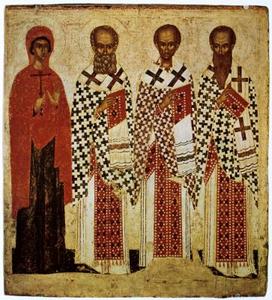SOURCE: Opposing Views
by Robert Allen, Demand Media
 Iconoclasm opposes the creation and use of religious images. Photos.com/Photos.com/Getty Images
Iconoclasm opposes the creation and use of religious images. Photos.com/Photos.com/Getty Images
Iconoclasm in its most basic sense refers to the destruction or rejection of images, usually for political or religious reasons. In the political world, revolutionaries might deface or destroy statues or paintings of former leaders. Iconoclasm has a special meaning in the religious world and most often refers to an eighth- and ninth-century controversy among the Byzantine churches over the use of religious icons.
Iconoclasm in the Bible
Proponents of iconoclasm often refer to specific stories in the Old Testament to support their cause. They cite stories of the Israelites creating idols of false or foreign gods and God's punishment for these sins. Moses and other Israelite leaders often ordered the destruction of these images or idols. One of the Ten Commandments even directs God’s followers, “You shall not make for yourself a graven image.” Iconoclasts consider any icon a graven image.
Byzantine Icons
For Eastern Orthodox Christians, icons are sacred images that represent Jesus Christ, the Virgin Mary, saints or events in the life of Christ. In the Byzantine era, Christians created icons in many media such as gemstones, ceramic, precious metals, mosaic and fresco. Byzantine icons varied greatly in size and shape, with some even worn around the neck. Byzantine Christians believed that focusing on an icon helped them communicate with the figure represented by the icon, aiding the Christian’s prayer in its journey.
Iconoclast Controversy
From the years 726 to 787 and again from 815 to 843, the Byzantine emperor prohibited the creation and use of icons. Opponents of icons argued that a Christian using an icon was worshiping or venerating the saint or figure represented in the image itself. Rather than icons, leaders promoted the use of crosses to decorate churches. In certain parts of the eastern world, icons were destroyed. Few icons remain from this period, lost to iconoclasm. Scholars debate the exact cause of the iconoclast controversy, with some arguing that it was a power play on the part of the emperor and others arguing that it sprang from Islam’s rise in Byzantium.
Modern Orthodoxy and Icons
Today’s Orthodox Christians still use icons. They respect or venerate icons because of what the icons depict. They may use icons to help themselves become more reverent in prayer, and to help them focus on the particular saint, biblical story or idea represented by the icon. Orthodox Christians don’t pray to icons, but they do pray in the presence of icons as an aid to their prayers. (See Ref 4)
References
- Heilbrunn Timeline of Art History: Icons and Iconoclasm in Byzantium
- Macedonian Heritage: Iconoclast Controversy
- Orthodox Research Institute: The Iconoclastic Crisis
- Orthodox Christian Information Center: The Icon FAQ
- Antiochian Orthodox Christian Archdiocese of North America: No Graven Image: Icons and Their Proper Use
About the Author
Robert Allen has been a full-time writer for more than a decade. Prior to that he worked in information technology as a network engineer. He has earned a bachelor's degree in history and religion/philosophy from Indiana Wesleyan University, a master's degree in humanities from Central Michigan University, and completed a year of studies at Christian Theological Seminary.
